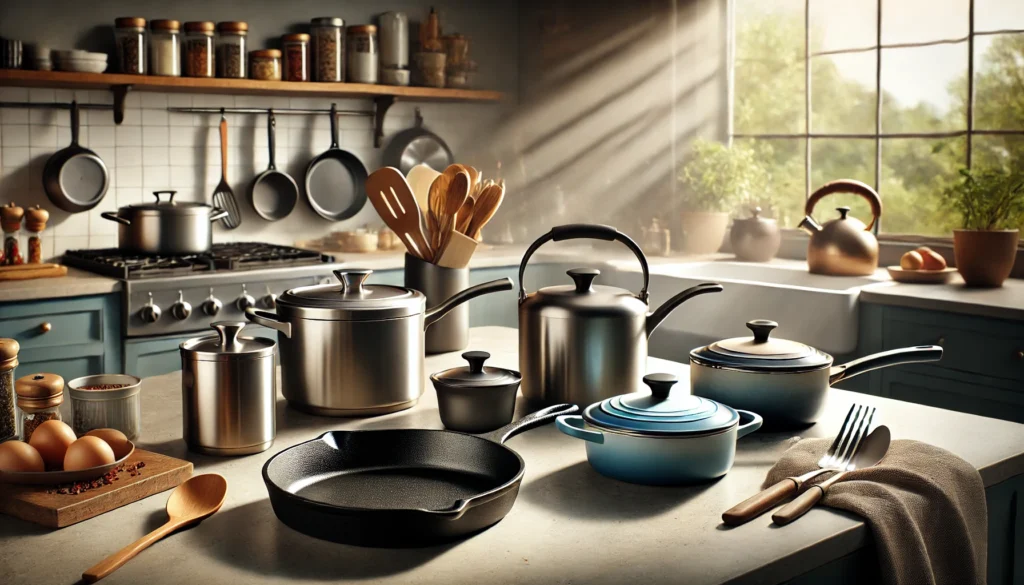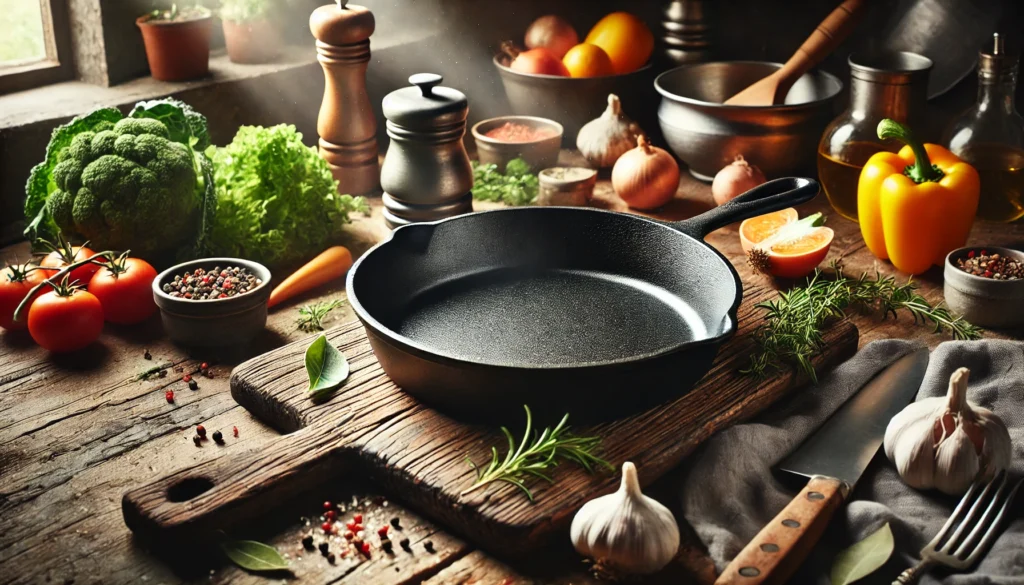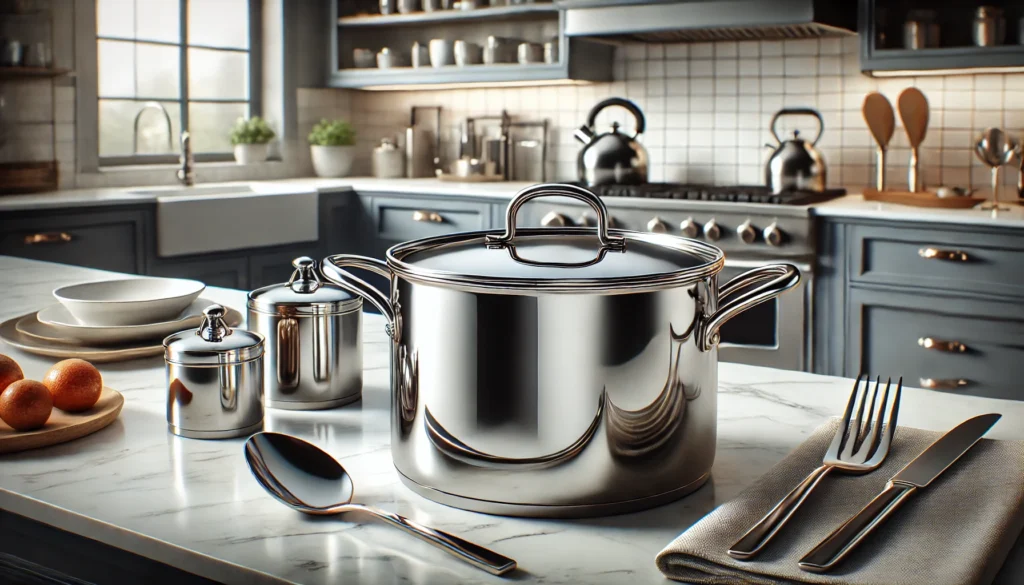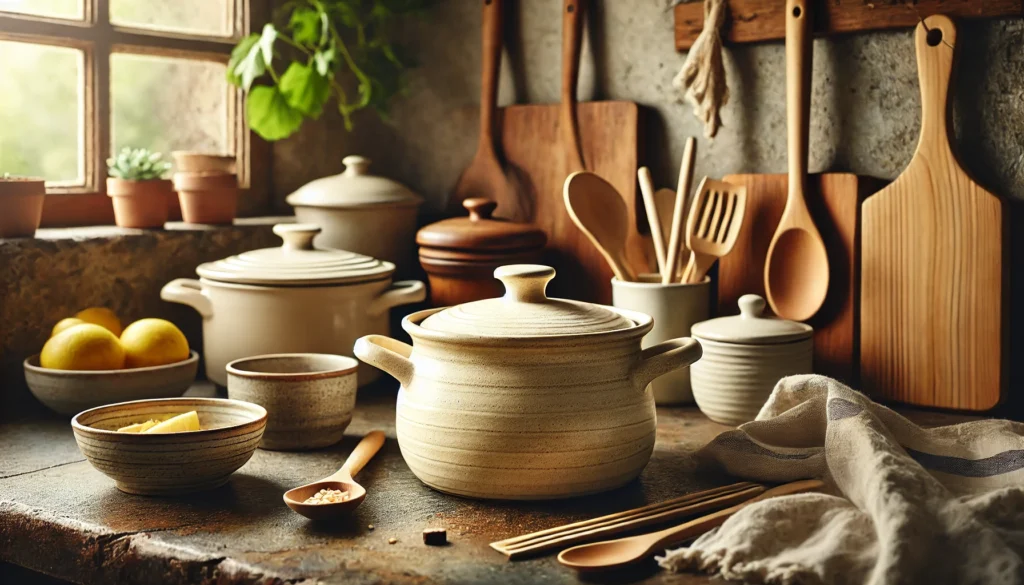
In the heart of every kitchen, where the warmth of home-cooked meals brings families together, the choice of cookware often goes unnoticed. Yet, this everyday decision plays a vital role in not just the taste but also the health benefits of the food we serve. Experts like Dr. Saurabh Sethi, an American gastroenterologist, remind us that what we cook with can be just as important as the ingredients themselves.
Table of Contents
Introduction
When it comes to choosing healthy cookware, three materials stand out for their health benefits: cast iron, stainless steels, and ceramic cookware. These materials offer unique advantages, ensuring that your meals are delicious and free from harmful toxins and chemicals. In this article, we’ll explore the benefits of each, how they contribute to healthier cooking, and why investing in the right cookware matters.
Cast Iron: A Tradition of Strength and Health
Strength and Durability
Cast iron cookware has been used for centuries and is known for its durability. It lasts a lifetime if properly cared for. A well-seasoned cast iron skillet develops a non-stick surface, reducing the need for excessive oils or fats when cooking.

Health Benefits of Cooking with Cast Iron
Cooking in cast iron naturally infuses small amounts of iron into your meals, which can be beneficial, especially for individuals with iron deficiencies. Iron is essential for producing red blood cells and transporting oxygen throughout the body.
Care and Maintenance
To maintain a cast iron pan, regularly season it with oil, avoid using harsh soaps, and ensure it’s thoroughly dried to prevent rusting. A properly cared-for cast iron skillet can be a cornerstone of your kitchen for decades.
Stainless Steels: Durable and Non-Reactive
Why Stainless Steels is Popular
Stainless steels cookware is a kitchen staple due to its sleek design, durability, and non-reactive nature. This material doesn’t interact with acidic foods, making it a great option for dishes involving tomatoes, vinegar, or citrus.

Free From Harmful Chemicals
Unlike non-stick pans, stainless steel is free from harmful chemicals such as PFOA and PTFE, which can leach into food at high temperatures. This ensures safer cooking, even when cooking at high heat.
Cooking Versatility
Stainless steel’s ability to withstand high temperatures and its durability make it an excellent choice for various cooking methods, including searing, sautéing, and deglazing. Plus, it’s dishwasher-safe, making cleanup easier.
Ceramic Cookware: Pure and Chemical-Free
A Safe and Non-Toxic Option
For those who prioritize chemical-free cooking, ceramic cookware is an ideal choice. It is free from toxic substances like PFOA and PTFE, which are often found in traditional non-stick pans. Ceramic offers a safe and non-toxic alternative.

Even Heat Distribution
Ceramic cookware heats evenly, ensuring that food is cooked thoroughly and consistently. This reduces the risk of undercooked or unevenly cooked meals.
Benefits for Health-Conscious Cooks
Ceramic cookware allows you to cook with minimal oil, leading to lower-fat, healthier meals. Its non-stick surface also makes it easier to clean without harsh chemicals or abrasives.
Why Choosing the Right Cookware Matters
The cookware you use has a direct impact on your health. Non-stick pans that contain harmful chemicals like PFOA and PTFE can release toxic fumes when overheated, posing long-term health risks. By using healthier options like cast iron, stainless steel, and ceramic cookware, you can avoid these risks.
Conclusion
Investing in the right cookware is not just about longevity and ease of use; it’s also about making healthier meals for yourself and your family. Cast iron adds iron to your diet, stainless-steel ensures safe cooking without chemical exposure, and ceramic offers a non-toxic, chemical-free cooking experience.
FAQs
What is the healthiest cookware material?
Cast iron, stainless-steel, and ceramic are considered some of the healthiest cookware materials due to their non-toxic, durable, and chemical-free properties.
Is cast iron good for health?
Yes, cooking in cast iron can increase the iron content in your food, which is especially beneficial for those with iron deficiencies.
Why is stainless steels cookware recommended?
Stainless steel is non-reactive, ensuring that it does not interact with acidic foods. It is also free from harmful chemicals like PFOA and PTFE.
Is ceramic cookware safe?
Yes, ceramic cookware is non-toxic and free from harmful chemicals like PFOA and PTFE, making it a healthy option for cooking.
How should I care for cast iron cookware?
Season cast iron regularly with oil, avoid harsh soaps, and dry it thoroughly after washing to prevent rusting and maintain its non-stick surface.
